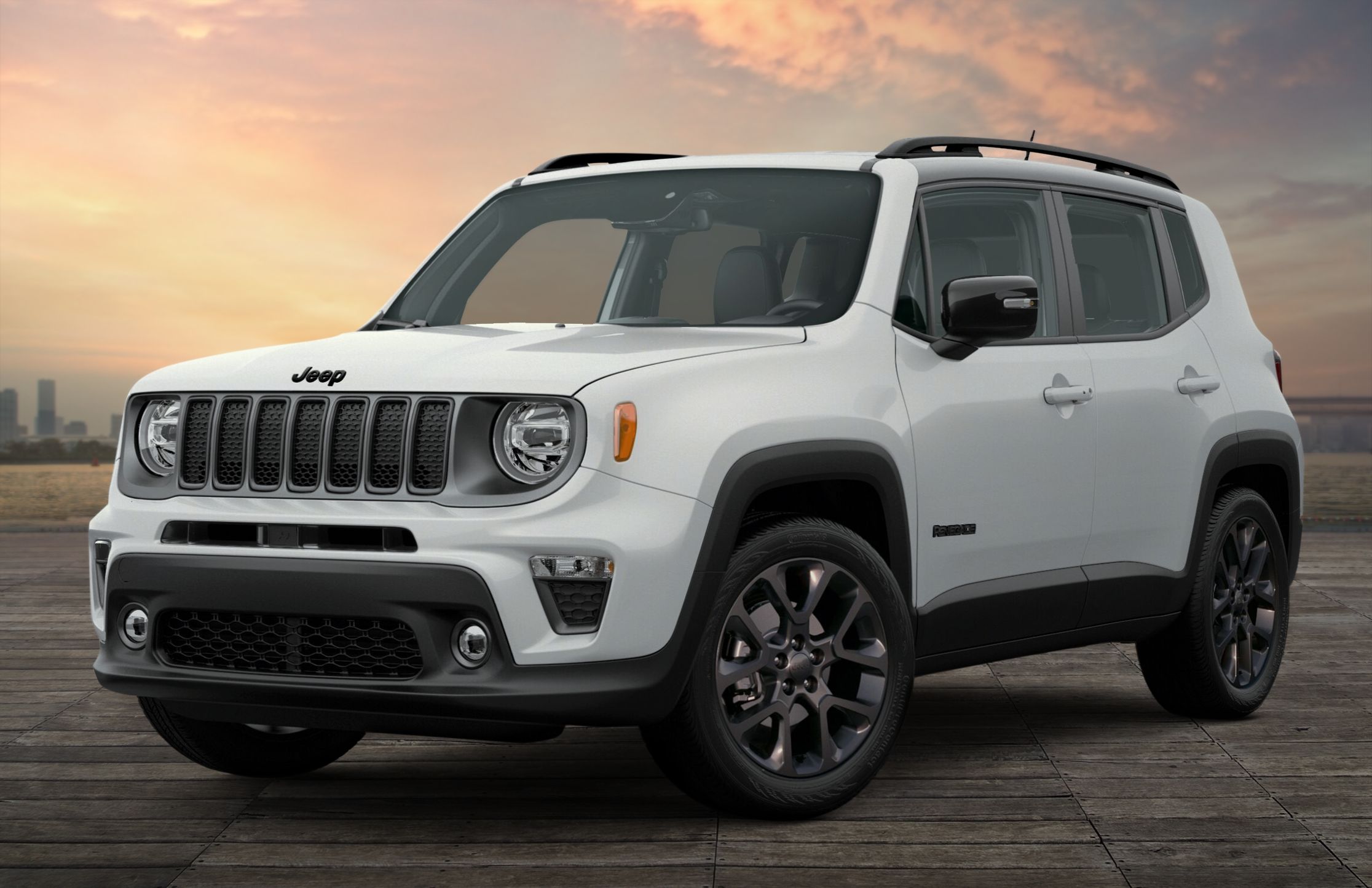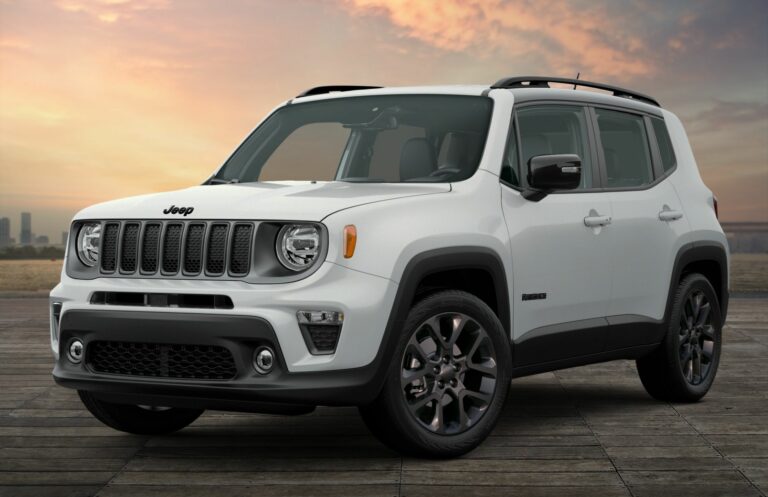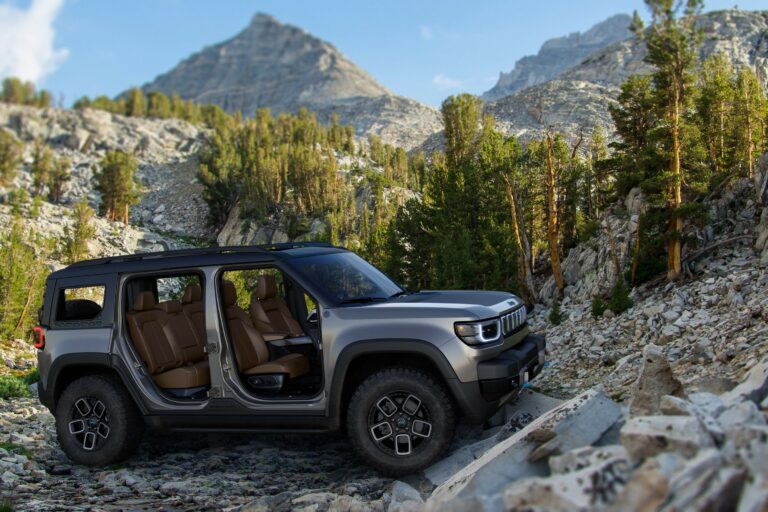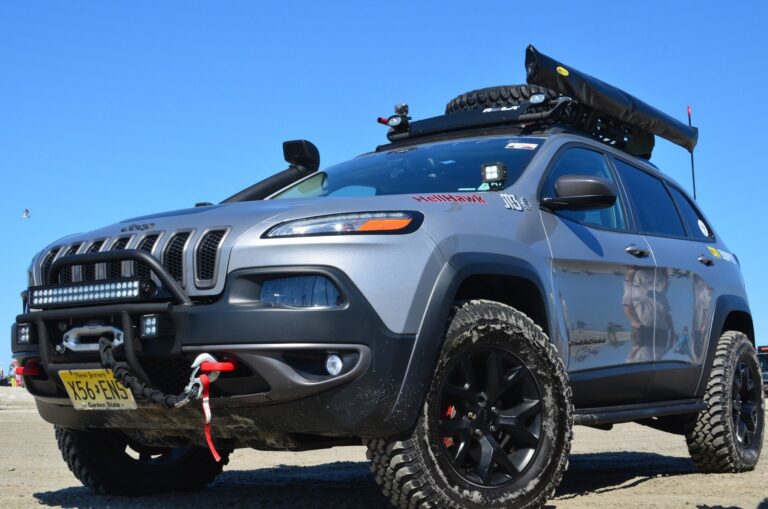Jeep CJ-6 For Sale: A Comprehensive Buyer’s Guide to Owning an Overlooked Classic
Jeep CJ-6 For Sale: A Comprehensive Buyer’s Guide to Owning an Overlooked Classic jeeps.truckstrend.com
In the vast and storied lineage of the iconic Jeep CJ series, models like the CJ-5 and CJ-7 often steal the spotlight. Yet, nestled within this rugged family is a truly unique and often overlooked gem: the Jeep CJ-6. For those in the know, finding a Jeep CJ-6 for sale isn’t just about acquiring a vehicle; it’s about uncovering a rare piece of automotive history, a versatile off-road workhorse, and a canvas for customization that stands apart from its more common siblings.
This comprehensive guide is designed for the discerning enthusiast, the aspiring collector, or simply anyone captivated by the allure of vintage Jeeps, who is now contemplating the journey of finding and acquiring a Jeep CJ-6. We’ll delve into what makes the CJ-6 special, the benefits of ownership, a detailed buying process, critical considerations, and practical advice to ensure your acquisition is a successful and rewarding one.
Jeep CJ-6 For Sale: A Comprehensive Buyer’s Guide to Owning an Overlooked Classic
The Enduring Legacy of the Jeep CJ-6: What Makes It Special?
The Jeep CJ-6, produced from 1955 to 1981 in the United States (and even longer internationally, notably in Brazil), is essentially a stretched version of the CJ-5. Its defining characteristic is its significantly longer wheelbase – 101 inches compared to the CJ-5’s 81 inches. This seemingly minor difference had a profound impact on its utility and driving dynamics, setting it apart from other CJs.
Initially conceived to offer more cargo capacity and the option for a rear bench seat, making it more practical for utility work, hunting, or transporting more passengers, the CJ-6 found favor with government agencies, farmers, and adventurers who needed that extra space. While it never achieved the widespread commercial success of the CJ-5 or CJ-7 in the US market, its limited production numbers contribute to its rarity today. This rarity, combined with its classic aesthetic and inherent Jeep capability, positions the CJ-6 as a highly desirable vehicle for collectors and off-road enthusiasts alike. It offers a smoother ride on rough terrain due to its longer wheelbase, providing better stability for certain off-road challenges and a less "bucking" sensation than its shorter counterparts.
Why Invest in a Jeep CJ-6? Benefits for the Enthusiast
The decision to seek out a Jeep CJ-6 for sale comes with a unique set of advantages:
- Uniqueness & Rarity: Owning a CJ-6 means you’ll almost certainly have the only one at any car show or trail ride. Its distinctive proportions and limited numbers ensure it stands out.
- Classic Status & Heritage: The CJ-6 embodies the rugged, go-anywhere spirit of early Jeeps. It’s a tangible link to the brand’s post-war utilitarian roots, making it a valuable piece of automotive history.
- Enhanced Practicality: The longer wheelbase translates to more interior space. This extra room is invaluable for hauling camping gear, tools, or even accommodating extra passengers with a rear seat, making it more versatile than a CJ-5 for certain applications.
- Off-Road Prowess: Despite its vintage, the CJ-6 retains the legendary off-road capability synonymous with the Jeep brand. Its robust frame, solid axles, and capable 4×4 system, combined with improved stability from the longer wheelbase, make it a formidable machine on trails.
- Customization Canvas: Like all CJs, the CJ-6 is a prime candidate for personalization. Its simple, body-on-frame design allows for a vast array of modifications, from engine swaps and suspension lifts to interior upgrades, allowing owners to tailor it precisely to their needs and tastes.
- Potential Appreciation: Well-maintained, original, or professionally restored CJ-6s have shown a steady appreciation in value, particularly given their rarity. It can be not just a passion project, but also a sound investment.

Navigating the Market: A Comprehensive Buying Guide for the CJ-6
Finding the right Jeep CJ-6 for sale requires patience, diligence, and a strategic approach. Here’s a step-by-step guide:
Step 1: Define Your Needs and Budget
Before you begin your search, clarify what you intend to do with the CJ-6. Do you want a pristine show vehicle, a capable trail rig, or a weekend cruiser? Your intended use will dictate the condition you should seek and the budget you need. Remember to factor in potential post-purchase costs like immediate repairs, maintenance, insurance, and any desired modifications.
Step 2: Where to Look for a CJ-6
Given their rarity, you’ll need to broaden your search:
- Online Classifieds: Websites like Craigslist, Facebook Marketplace, and eBay Motors are common starting points. Be specific in your search terms.
- Specialty Auction Sites: Platforms such as Bring a Trailer or Mecum Auctions occasionally feature well-preserved or restored CJ-6s.
- Classic Car Dealerships & Brokers: Some dealers specialize in vintage 4x4s and may have a CJ-6 in their inventory or be able to source one.
- Online Forums & Communities: Dedicated Jeep forums (e.g., EarlyCJ5.com, CJ-related Facebook groups) are excellent places to find vehicles, get advice, and connect with sellers.
- Word-of-Mouth: Attending local Jeep events, off-road clubs, or classic car shows can sometimes lead to unexpected finds.
Step 3: Initial Vetting (Online and Remote)
Once you find a potential candidate, gather as much information as possible before an in-person visit:
- Request Detailed Photos: Ask for high-resolution images of the exterior, interior, engine bay, undercarriage (especially frame and floorboards), and any specific areas of concern.
- Ask for Documentation: Inquire about service records, restoration receipts, and ownership history.
- Video Walk-around: A video can provide a better sense of the vehicle’s condition, including startup and engine sounds.
- Ask Specific Questions: Don’t be afraid to ask about rust, engine condition, drivetrain functionality, and any known issues.
Step 4: The Pre-Purchase Inspection (PPI)
This is the most critical step. If possible, inspect the vehicle in person or hire a qualified, independent mechanic specializing in vintage 4x4s to do so.
- Frame and Body Integrity: This is paramount. Check for rust, especially on the frame rails, body mounts, floorboards, rocker panels, and rear cross member. Minor surface rust is common, but extensive structural rust is a major red flag and costly to repair. Pay close attention to areas where the body meets the frame.
- Engine and Drivetrain:
- Engine: Check for leaks, unusual noises (knocks, rattles), smoke from the exhaust, and proper operation. Common engines include the Hurricane F-head/L-head 4-cylinder, Dauntless V6, and later AMC inline-6s or V8s.
- Transmission & Transfer Case: Test all gears, including 4-high and 4-low. Listen for grinding or slipping. Ensure the 4×4 system engages smoothly.
- Axles: Check for leaks around differential covers and excessive play in universal joints.
- Suspension and Steering: Inspect leaf springs for sagging or cracks, bushings for wear, and shocks for leaks. Check for excessive play in the steering wheel, which could indicate worn steering components.
- Brakes and Electrical: Verify brake functionality (pedal feel, stopping power). Check all lights, gauges, and accessories. Wiring can often be an issue in older Jeeps.
- Paperwork: Ensure the vehicle has a clear, transferable title that matches the VIN on the vehicle. Verify the VIN in multiple locations if possible.
Key Considerations When Evaluating a CJ-6 For Sale
- Originality vs. Modification:
- Original/Unmolested: These are rare and highly sought after by collectors. They may require more mechanical attention to be roadworthy but offer the highest potential for appreciation.
- Restored: A well-restored CJ-6 can be turn-key, but scrutinize the quality of the restoration work. Poor restorations can hide underlying issues.
- Modified: Many CJ-6s have been modified for off-roading. Assess the quality and safety of any aftermarket parts or custom fabrication. Engine swaps are common; ensure they were done professionally and are legally compliant.
- Parts Availability: While many mechanical parts are shared with CJ-5s and CJ-7s (making them relatively easy to find), CJ-6 specific body panels (like the longer tub) are exceedingly rare. Be prepared for fabrication if you need body repairs.
- Engine Types and Their Quirks:
- Hurricane F-head/L-head (4-cyl): Robust but low on power. Parts are generally available.
- Dauntless V6: A popular, torquey engine that greatly improved performance. Known for its distinct firing order.
- AMC Inline-6 (232/258 cu in): Later models often featured these reliable and powerful engines.
- V8 Swaps: Common for more power, but check the quality of the conversion.
- Pricing Fluctuations: The price of a CJ-6 varies wildly based on condition, originality, engine, modifications, and location. Be prepared for a range from a few thousand dollars for a project to well over $30,000 for a meticulously restored or heavily modified example.
Tips for a Successful CJ-6 Acquisition
- Bring an Expert: If you’re not mechanically inclined, bring a knowledgeable friend or hire a mechanic for the inspection.
- Test Drive Thoroughly: Don’t just drive around the block. Take it on varying terrains if possible. Listen for strange noises, check steering response, braking effectiveness, and engage 4WD.
- Negotiate Wisely: Research market values. Be prepared to walk away if the price isn’t right or if too many red flags appear.
- Factor in Post-Purchase Costs: Budget for immediate maintenance, fluid changes, new tires, and any necessary repairs or desired upgrades.
- Join the Community: Engaging with online forums, Facebook groups, and local Jeep clubs can provide invaluable advice, leads on parts, and support from fellow enthusiasts.
Potential Challenges and Solutions
- Challenge: Finding a CJ-6:
- Solution: Be patient and persistent. Expand your search geographically. Network within the classic Jeep community.
- Challenge: CJ-6 Specific Body Parts:
- Solution: Fabrication is often necessary. Some specialized fabricators can create custom panels. Look for donor vehicles, though they are rare.
- Challenge: Finding Qualified Mechanics:
- Solution: Seek out shops specializing in vintage 4x4s, classic cars, or off-road vehicle fabrication. Many general mechanics may be hesitant to work on older, unique vehicles.
- Challenge: Cost of Restoration/Maintenance:
- Solution: Understand that owning a classic vehicle is a passion project and often requires a significant financial commitment. Budget realistically for parts and labor. Learn to do some work yourself to save costs.
Jeep CJ-6 For Sale: Estimated Price Guide
The market for a Jeep CJ-6 is highly variable. This table provides a general estimation based on condition and common factors. Prices can fluctuate significantly based on originality, engine type, specific modifications, and geographic location.
| Condition Category | Model Year Range | Estimated Price Range (USD) | Key Factors Affecting Price |
|---|---|---|---|
| Project/Parts Vehicle | 1955-1981 | $3,000 – $8,000 | Significant rust, non-running engine, incomplete parts, major mechanical issues. Best for experienced restorers or as a donor vehicle. |
| Driver Quality | 1955-1981 | $8,000 – $18,000 | Runs and drives, but typically needs work (mechanical, cosmetic, electrical). May have moderate rust, worn interior, or non-original parts. Suitable for regular use with ongoing maintenance. |
| Restored/Modified | 1955-1981 | $18,000 – $35,000+ | Professionally restored or tastefully modified. Good to excellent paint, solid frame, rebuilt engine/drivetrain, upgraded components (e.g., power steering, disc brakes, modern engine swap). Quality of work is paramount. |
| Concours/Show Quality | 1955-1981 | $35,000 – $60,000+ | Meticulously restored to original specifications or to an extremely high standard. Flawless paint, pristine interior, factory-correct components, minimal modifications (if any). Very rare to find in this condition for a CJ-6. |
Note: These are estimates. A rare, early model with a specific engine or historical significance could command higher prices.
Frequently Asked Questions (FAQ) about Jeep CJ-6 For Sale
Q1: Is the Jeep CJ-6 a good daily driver?
A1: Generally, no. While a well-maintained or modified CJ-6 can be driven regularly, they lack modern comforts like air conditioning, advanced safety features, and smooth highway manners. They are best suited as weekend cruisers, off-road vehicles, or project cars.
Q2: Are parts hard to find for a CJ-6?
A2: Mechanical parts (engine, transmission, axles) are often shared with CJ-5s and CJ-7s, making them relatively available through aftermarket suppliers. However, CJ-6 specific body panels (like the longer tub) are very difficult to find and often require custom fabrication.
Q3: What’s the best engine for a CJ-6?
A3: This is subjective. The original Hurricane 4-cylinder is reliable but low on power. The Dauntless V6 offers a significant power boost and is highly sought after for originality. Many owners swap in AMC inline-6 (258/4.0L) or even small-block V8s for more power and modern reliability.
Q4: How much rust is too much when buying a CJ-6?
A4: Any significant rust on the frame (especially along the rails, at suspension mounts, or body mounts) is a major concern and very expensive to repair. Surface rust on the body is manageable, but large holes in floorboards or rocker panels indicate deeper issues. Prioritize a solid frame above all else.
Q5: Can I get classic car insurance for a CJ-6?
A5: Yes, most classic car insurance providers (like Hagerty, Grundy, or American Modern) offer specialized policies for vintage Jeeps, often with agreed-upon value coverage and lower premiums than standard auto insurance, provided the vehicle meets their criteria (e.g., not a daily driver, garaged).
Q6: What’s the main difference between a CJ-5 and a CJ-6?
A6: The primary difference is the wheelbase. The CJ-6 has a 101-inch wheelbase, 20 inches longer than the CJ-5’s 81-inch wheelbase. This provides more cargo space, allows for a rear seat, and offers a slightly smoother ride and improved stability.
Conclusion
The Jeep CJ-6 represents a unique opportunity for enthusiasts to own a piece of Jeep history that truly stands out. Its rarity, extended practicality, and unwavering off-road capability make it a compelling choice for those seeking something beyond the ordinary. While the journey of finding and acquiring a Jeep CJ-6 for sale may require patience and a keen eye for detail, the reward of owning and experiencing this distinctive classic is immeasurable. By thoroughly researching, conducting meticulous inspections, and understanding the nuances of the vintage Jeep market, you can confidently navigate the process and soon find yourself behind the wheel of a legendary CJ-6, ready for countless adventures on and off the beaten path.






